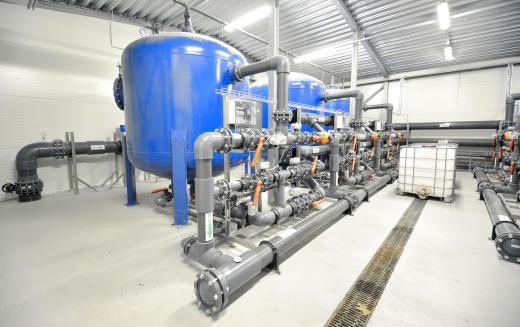An air eliminator is a segment of piping which is attached to a main piece of pipe to trap and release air. In systems in which the flow of fluids is measured by a meter, the eliminator is usually attached ahead of the meter and on top of the main line. The main purpose of air eliminators is to prevent air from passing through the meter, which would cause inaccurate volume readings. Most piping systems used in the boilers and chillers in residential housing and manufacturing facilities utilize air eliminators.
Since air is generally lighter than liquids, air eliminators are attached above a stilling chamber at the highest part of the main pipe. Flow meters cannot differentiate between fluids and air, so air eliminators are installed ahead of the meters in a pipeline so that air will not be measured. This way the volumetric readings of the meters are more accurate. Excessive wear and unit failure or damage can also be reduced if the liquid flow is free from air.

A typical air eliminator is a circular piece of plumbing material made of a metal such as aluminum or steel. Some types are made from polyvinylchloride (PVC). Metal air eliminators are prone to corrosion caused by water, steam, or refrigerant flow, as well as by excessive air entrapment. PVCs do not rust, but can leech out harmful chemicals into the passing liquid.
An air eliminator is made up of the metal or plastic housing, the valve, and the air vent. The housing has an inlet, where the liquid flows, and an outlet located on top, where air is released. A valve is attached to a floating object by a lever. This whole valve unit is responsible for detecting and pushing air above the liquid level. The air vent traps the air and then releases it either by manual operation or when pressure limits are breached in automatic air eliminators.
Manual and mechanical air eliminators are relatively inexpensive and simple to repair. The requires more manpower, however, and may not be cost-efficient in the long run due to more frequent repairs. An automatic air eliminator can provide more precise volumetric measurements but is more expensive than mechanical ones.
Air eliminators should be tested upon installation and maintained regularly. Technicians recommend checking the air vents of these devices at least twice a year. The life and condition of these devices may be prolonged by installing a separator with mesh to trap solids which can lodge into the air eliminator. Replacement of an air eliminator is recommended after five years.

